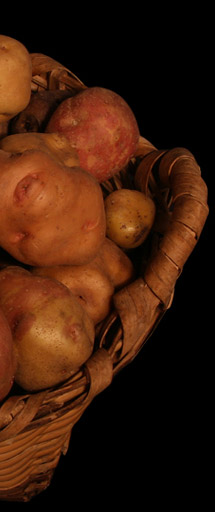
 |
 |
Agriculture and its relation to nature.
Since ancient times the people had a stronger relation with nature, until the arrival of pesticides, insecticides and with it more pests, more treatments, without conscience of the importance of keeping the natural balance and avoid weakness in crops with those fatal results. At that time pests were extermined not knowing that also predators of those pests were killed. Also pests became resistant and stronger treatments must be given. In spite of all that, farmers knew how to mantain a close line to that shown from nature, like moon influence, crop rotations (fertilize or soil rest), crop association (wine, maize, potatoes, ...), location and apparance of clouds to know the climate state, bloomings showing future weather (wet, dry or cold year). As a curiosity, it is told that dependig on the tide it was known if a baby would be boy or girl; also that when the Teide has got a kind of hat, it would rain; if the canes bloomed that year, it would snow; if it rains at the first moon of october, seven moons will cover (it would rain at the moons of the following seven months); the shape of the clouds like briks pointed out rain; the cloud's layout over the mountains also indicated wheater changes. The popular saying “At Saint Lucía , nights become shorter and days longer” informs us the coming of the winter solstice. It is to note how basket makers know when to prune the Follao ( Viburnum rigidum), the chestnut wood and other trees or bushes. According to them, if it is done on crescent “the wood becomes full of bugs”. So it should be cut on the wane. The wine's prune should be done likewise, so that the shoots do “not cry”. The sap rises and there is more dynamism on the aerial parts, so the cut stays/remains/becomes/are left at the expense of fungus and virus, growing weak. We know that these practice have to coincide with the sap's winter rest, and it is a general belief (even agronomic experts) that the flows of this liquid responds, as well as the tides, to the action of our satellite. Regarding potatoes, the farmer could predict when to seed or to recollect depending on the moon's position. In this way, on waning moon there is a greater development of roots and other subterranean parts, while on crescent moon it occurs with the upper parts (leaves, fruits and fruits). Since ever, mankind has had a strong relation with nature and its phenomenon, including astronomic cycles. Farmers, fishers and shepherds were aware about these cycles and therefore they took advantage of it. This knowledge has developed in a decreasing way due to tradition or custom, to such an extend to be a topic forgotten by the more technical agriculture science. But the moon's phases' influence is obvious and not a pure illusion or superstition, even endorsed by some scientific research Knowledge and learning enrich the traditional culture, by oral history, generation after generation. Without being simple, it granted wisdom to farmer's practice.Source: • Papas Antiguas de Canarias • Jardin Actual (acceso desde la página, 2004) • José Manuel González Rodríguez (Catedrático de Economía Aplicada, Universidad de La Laguna , Tenerife, España). • Claude Aubert. El huerto biológico, Integral (1997) |
 |